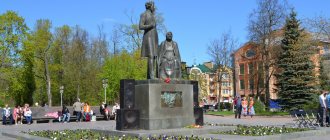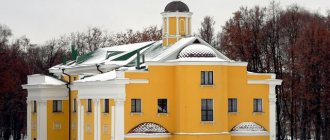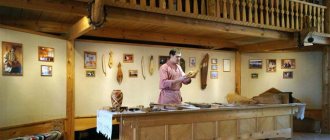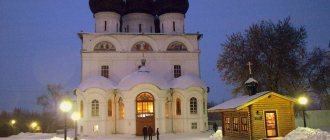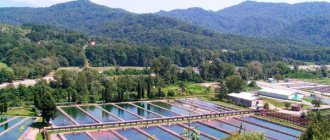Visiting Crimea and not visiting Sevastopol is the same as visiting Moscow and not walking along Red Square! A hero city, a romantic city, a city of ships and sailors, a snow-white beauty - one of the best cities in Russia. Objects, cathedrals, museums and monuments covered in military glory awaken the imagination, make the heart beat anxiously and joyfully and feel a sense of pride for some involvement in all this.
It cannot be otherwise - so many dramatic events in the life of the country are connected with Sevastopol. Tolstoy, Bunin, Sergeev-Tsensky, Bulgakov paid tribute of respect and worship to the proud city, immortalizing its name. Recommendations on what to see in Sevastopol in 1 day on your own will help you see the main attractions of the Crimean metropolis.
Kornilov embankment
If you thought that this title was dedicated to the notorious white general, you would be mistaken. Located next to Primorsky Boulevard, the winding street bears the name of the defender of Sevastopol, Vice Admiral Vladimir Alekseevich Kornilov. The hero of the Crimean War died in battle, and grateful residents renamed Primorskaya Street to Kornilov Embankment in 1886.
You will see many memorials and memorial symbols while walking along one of the most popular promenades. Among them is a memorial plaque in honor of the sailors who took part in the 1st Russian Revolution, a memorial sign to Kornilov with the text of his last message. From this street you can see the famous monument - the Monument to Sunken Ships. On the Kornilov Embankment there are the Humanitarian University and the Palace of Childhood and Youth - you cannot pass by them indifferently.
The creative intelligentsia gathers here: artists, musicians, photographers, informal youth. Even in nice, cozy restaurants there is a creative atmosphere, especially during the holidays. Today, the local community is actively fighting against the dominance of small retail establishments and for the cleanliness of the historical street.
- 20 best excursions in Sevastopol
- 16 best museums in Sevastopol
- What to see in Sevastopol in 2 days - 16 most interesting places
- 11 best beaches in Sevastopol
- Sights of Sevastopol
Sevastopol – How to get from Evpatoria?
Content
I’ll immediately make a reservation that I spent my vacation in my hometown of Evpatoria, and took a one-day trip to Sevastopol, so this article should in no way be considered as a review and exhaustive one that describes all the sights of Sevastopol. These are rather impressions of the city received during one August day.
So, we are going to Sevastopol from Evpatoria. The most convenient way to get there is by bus. We were transported there and back in a comfortable Mercedes bus. The road from Evpatoria to Sevastopol takes 2 hours. However, the driver got us back in just an hour and a half, he wanted to go home so much))
A ticket costs 179 rubles (there) and 177.5 (back). Two round trip tickets cost us about 750 rubles. Tip: Buy your tickets a little in advance if you want more comfortable seats. We bought tickets five days before the trip at the Evpatoria bus station, and our seats were 1 and 2.
The first flight from Evpatoria to Sevastopol departs at 7 a.m., and the last flight from Sevastopol to Evpatoria at 20.30. The bus arrives at Severnaya. To get to the city you need to take a ferry (cost 12 rubles) or a boat (10-12 rubles). The pier is located right next to the bus station.
Boat schedule (photo)
We chose the first option and sailed on the ferry “Admiral Lazarev”, which arrives at Artillery Bay.
Ferry “Admiral Lazarev” (photo)
Artbukhta (photo)
The trip lasts 15-20 minutes (you can get to the Count's pier by boat). At Artbukhta we refreshed ourselves with coffee and set off to explore the city on foot. We drank coffee here. Check it out))
Stardax cafe in Sevastopol photo
Monument to the Scuttled Ships
Walking along the nearby Primorsky Boulevard, right into the sea, not far from the shore you will see a majestic obelisk rising 17 meters above the water. The story of its appearance cannot but excite to the core. It is dedicated to the lost ships sacrificed to save the city from enemy ships of the fleets - participants in the Crimean War.
In order to prevent them from approaching the shores of the city, Prince Alexander Menshikov ordered the scuttling of 5 old ships and 2 frigates at the entrance to the bay. The sailors of the sunken ships fought the enemy from the shore. Later, all the remaining ships of the Black Sea Fleet were sunk, the need for which V. Kornilov spoke with sadness. Even the enemy command appreciated the correctness of the strategic decision.
The monument is dedicated not only to the sunken ships, but also to the entire heroic defense of Sevastopol, which lasted 349 days. 10 years after the end of the war, the remains of ships were raised to clear the bay. The magnificent monument, erected in 1905, commemorated the 50th anniversary of the first defense of the city. A granite “cliff” rises from the depths of the sea, on which rests a majestic Corinthian column, topped with a bronze sculpture of a 2-headed eagle.
In its beak is a wreath of laurel and oak leaves, to which an anchor is attached. A commemorative inscription is carved on the bronze plate of the pedestal. As a symbol of resilience, the monument withstood an earthquake, a mine explosion and enemy occupation, and in 1969 it deservedly appeared on the city’s coat of arms. The author of this amazing monument is the Estonian sculptor Adamson.
Monument to P.S. Nakhimov
(Nakhimov Square)
On polished granite there is a bronze sculpture of the outstanding naval commander, installed on November 18, 1898, on the 45th anniversary of the Battle of Sinop. Then the Russian Black Sea Fleet under the command of Admiral Nakhimov defeated the Turkish squadron in a matter of hours.
You look at this majestic monument and understand how important the educational value of monumental art can be. because immediately there is a desire to measure all actions with the life of this outstanding personality, for whom the honor of an officer is the meaning of life. To understand this, it is enough to read the words of the order embossed on the scroll under the bowed banner.
Unfortunately, in 1928 the monument was dismantled (Nakhimov was registered as a servant of the Tsar), and a sculpture of Lenin was installed in its place. Fortunately, in 1959, the admiral in a naval overcoat with the cross of St. George on his chest returned to his rightful place.
Count's pier
Sevastopol Bay is a series of piers and moorings, each of which has its own history. Among them, it is worth choosing the main pier - the Count's pier - a symbol of pomp and splendor of decoration. From pl. Nakhimov is separated by a majestic staircase ending in 2 graceful pavilions with a colonnade. At first the pier was called Ekaterininskaya, but people called it Grafskaya in honor of the squadron commander, Count Voinovich.
His squadron was the first of those to moor at the pier. It offers wonderful sea views, which is why townspeople and tourists love to come here. Opposite the pier, Pavlovsky Cape pleases the eye with picturesqueness. On the left you can see the beauty of the Northern side, with the Konstantinovsky and Mikhailovsky forts. One cannot help but be captivated by the architectural appearance of the classical design of the Count's Marina.
The main entrance is decorated with rows of Doric columns connecting square pavilions decorated with exendra on the facades. Corner pilasters add graceful solemnity to structures. The numbers are stamped on the attic - 1846 - the date of construction. The Count's Marina became another emblem of Sevastopol.
- 15 best things to do in Sevastopol for children
Where to stay in Sevastopol
To choose a place to live in Sevastopol, it is advisable to know its geographical features and determine the purpose of your visit.
- Sevastopol is a sprawling city, and not all housing is close to the sea or the main attractions, and many of them are compactly located in the center.
- The city lies among countless coves, but not all of them are beaches. Most of the coastline is occupied by piers or simply a rocky shore.
Sevastopol has both city hotels and several resort complexes with a beach. Of the latter, “Aquamarine Resort & SPA” is especially famous - due to the presence of a water park and proximity to the beach, and “Sand Bay” - also due to its location by the sea. The demand among tourists has determined hundreds of offers of guest houses and apartments; they can be rented in almost any part of Sevastopol. In addition, the city has a dozen modern hostels.
- Sevastopol Hotels
- Hostels for Budget Travelers
- Flats and apartments
- Guest houses in Sevastopol
Current review for those coming on a sea holiday:
- Sevastopol hotels by the sea
When checking availability for specific dates on Booking.com, be sure to check the “I am traveling for work” checkbox. Otherwise, room reservations will not be available.
Don't forget about cashback when booking accommodation - a good bonus from Booking.com and Tourist. Ru: Cashback promotion for Tourist. RU
Count's Marina Photo: © Anna Kudryavtseva
Military History Museum of the Black Sea Fleet
The oldest museum in the city, the exhibits of which were collected by what is called the whole world, was opened in 1869 in the house of General Totleben. At the same time, by decree of Alexander II, the institution received ownership of a plot of land for its development. In fact, it was a real museum complex reflecting the entire military history of the Black Sea Fleet.
Under him there was a parochial school and a vocational school. Today, the building, specially built for the museum, attracts attention with its solemn beauty, and it is difficult to pass by indifferently. Tens of thousands of exhibits demonstrate the rich military experience of the Black Sea Fleet. They were brought here even during the defense of the city: enemy trophies, party cards with traces of fresh blood, shells and more.
The building, partially destroyed by the war, was restored within 3 years, and in 1948 it again opened its doors to visitors. Inspection of the exhibits and the general atmosphere transport you to the era of the heroic defense of the city, the participation of military sailors in the defense of the city. Among the exhibits are Osman Pasha's saber, a telescope and personal belongings of Admiral Nakhimov, and other exclusive items.
Aquarium Museum
The largest habitat of representatives of marine and oceanic fauna is already famous for the fact that it was created on the initiative of the famous geographer and traveler Miklouho-Maclay. The Aquarium Museum is the first such institution, opened in Crimea in 1898. For a whole year, an endless line of people lined up around it to see the “inhabitants” of the underwater depths.
Today, the unique institution is united with the Institute of Biology of the South Seas, which employs hundreds of research scientists. A visit to the aquarium is an interesting immersion into the kaleidoscopic world of marine and oceanic fauna. Four thematic halls present almost 1 thousand different species of fish and animals, from the simplest specimens to incredibly fantastic specimens. They were collected from the sea in different parts of the world's oceans.
The central hall has a large swimming pool inhabited by sturgeon fish. Along the entire perimeter of the hall there are aquariums where you can see rare species of fish. Sea urchins, piranhas and other exotic species flash in a colorful round dance behind the glass. In one of the halls they show giant sea turtles and sharks. In the newly organized terrarium you can see rare species of snakes, spiders, and lizards. You won't leave here disappointed.
What else to read about Crimea
Where to stay in Crimea Yalta. Walking route around the city Trekking trails of Yalta Glade of Fairy Tales and Yalta Zoo Nikitsky Botanical Garden Tsar's Path Vorontsov Palace Massandra Livadia Bakhchisaray Gurzuf Alushta Simferopol Koreiz Simeiz
Excursions in Yalta | Apartments in Yalta | Excursions from Yalta
Sinop staircase
Author: Artur Chirkov, virtual-sevastopol.ru
Of the 600 stairs, preference should be given to the Sinop descent. This is the longest staircase of the city, built on the Central Hill, was created in the 50s of the last century in honor of the great victory of the Black Sea Fleet over the Turks in Sinop Bay (1853). In grandeur and scale, it is not inferior to the Potemkin Stairs in Odessa. The project, carried out by 4 architects, was brilliantly implemented. Sinopsky Descent is the pride of the city, a popular tourist destination.
Wide steps begin on the Kornilov embankment, then are interrupted by Nakhimov Avenue and majestically continue with 2 marches between beautiful buildings. Further forming a polygonal platform and passing it, the staircase is divided into 2 ramps. The site, transformed by skilled florists into a multi-colored carpet of fresh flowers, evokes universal delight. Walking along the steps, you will come out to the top of the hill, to the square. Lenin. To the left of the stairs is the Black Sea Fleet headquarters building. Standing at the foot of the monument, you will see the Sevastopol roadstead, the Konstantinovskaya battery and all the beauty of the bay.
Recommendations
The length of daylight in the south, especially in the second half of summer and autumn, is not too long. It gets dark quickly, and “the southern nights are very dark.” Please take this into account if you come from Sevastopol from another resort. But you are not going to stay overnight and plan to return back the same day.
Because, if the route to Simferopol is wide and of excellent quality - "Tavrida" has been put into operation, then the road, for example, to Evpatoria is fraught with many surprises. Outside populated areas, it is not illuminated, at times it gets very “worried” and is capable of hitting the bottom of a car. Yes, and sometimes it bends just not 90 degrees.
The highway to Yalta and beyond has a complex configuration. It's not without reason that the speed there is constantly limited - flying off the road can result in very unpleasant consequences.
Therefore, it is very important to adhere to the speed limit, not to drive, trying to return early.
Pay attention to the long slopes near Sevastopol. There also should not be exceeded, captivated by the good quality of the asphalt. And not just because of the chance to be captured on camera. Which, by the way, are in abundance here!
Be careful when parking in the city itself. Because the forced evacuation of vehicles has reached here too. And it costs 3,140 RUB in 2021. Plus, you will also have to pay a fine - 1.5 thousand - and the time the vehicle is stored in the impound lot.
© Eurotraveler.ru
Tower of the Winds
One of the most beautiful ancient buildings in the city with a romantic name - the Tower of the Winds - is located on a hill in the very center of the historical part. This is a unique architectural monument that has preserved its original appearance. The Wind Tower was erected as an air intake outlet for the book depository of the Maritime Library.
It, like the library building, was built in the Greek style by analogy with the Tower of Athens (1st century BC), making minor changes to the project. During the fierce shelling during the defense of the city, almost all the structures on the hill were destroyed. But the 8-sided tower building survived, and today it pleases the eyes of local residents and tourists with its beauty. Each face symbolizes a certain direction of the world, marked by the image of the corresponding God.
According to Greek mythology, the northern side is decorated with the sculpture of Boreas, the northwestern side - Skaryna, the eastern side - Aphelios, etc. High arched openings give the tower lightness and grace. The cone-shaped roof is topped by a pedestal with a spire. Under one of the arches there is a table with the inscription “Tower of the former maritime library”. Opposite the tower, in the Vladimir Cathedral, rests the ashes of Admiral Lazarev, the creator of the Maritime Library.
Sights of Sevastopol
Sevastopol, like most historical Russian cities, is certainly worth exploring its military history. However, not only numerous outstanding pages in the history of the Russian fleet are associated with it - the city has a unique charm that every traveler who sees its bay and ship moorings will feel.
Nakhimov Square
Central city square. In the center of the square you can see a monument to Admiral Pavel Nakhimov, the naval commander of the Battle of Sinop and the leader of the first heroic defense of Sevastopol, a talented naval commander.
Count's pier
The Count's Marina is the largest sea gate to the city. Here the granite steps of Sevastopol descend directly to the sea. The location of Sevastopol is advantageous from a geographical point of view, since it is located in a unique ice-free bay (closed from storms and winds). The terminal is equipped with two berths of 135 m and 200 m in length and is capable of receiving passenger cruise ships with a draft of 4 and 8 m, respectively. The image of the count's pier has become a kind of emblem of the hero city: the entire history of Sevastopol from its foundation to the present day is connected with this architectural monument. There are a large number of boat excursions.
Monument to Catherine II
Empress Catherine II founded Sevastopol in 1783. She visited the city in 1787, accompanied by Emperor Joseph II of Austria and other foreign dignitaries.
Museum of the Black Sea Fleet
The Black Sea Fleet Museum reflects the history of the Russian fleet in the southern seas from the very beginning to the present day (the period of the city's founding, the Crimean War, the revolutions of 1905 and 1917, World War II). The museum contains many rarities of great educational value (18-20 centuries). There is also a small display of Russian and Soviet weapons outside the building. The Church of the Black Sea Fleet is located here. The museum is open from Wednesday to Sunday and closed on the last Friday of each month.
St. Vladimir's Cathedral
Vladimir Cathedral was built after the Crimean War as a monument to the heroes of the siege of Sevastopol (1854–1855). Its dome is located at a height of 32.5 m. The architecture of the church is neo-Byzantine. The marble interior was decorated by a team of Swiss and Italian artists. The names of the heroes of the 1850s siege are inscribed on the walls. The cathedral was the burial place of the Russian imperial admirals Lazarev, Nakhimov, Kornilov and Istomin, who were destroyed by the Soviet authorities in 1931. The church was damaged during World War II. You can admire the view of Sevastopol harbor from the top of the Central City Hill, where the cathedral is located.
Sevastopol Art Museum (Art Museum)
The Sevastopol Art Museum represents one of the richest collections of works of art in Crimea. Despite the fact that it was organized relatively recently, in 1927, its history is remarkable in many respects and can be dated back even further, up to the first days after the end of the civil war in Crimea. Today it displays about 8,000 paintings, sculptures, drawings, engravings and objects of decorative and applied art from different times and countries.
Sevastopol Theater named after. Lunacharsky (Lunacharsky Theater)
In 1920, the revolutionary committee captured the city and named the theater after the People's Commissar of Education Anatoly Lunacharsky. The original theater building was destroyed during World War II. A Moscow group of architects under the leadership of V. Pelevin developed a project for a new building in a classical style. The renovated theater was opened in the fall of 1957 on Primorsky Boulevard. The auditorium has a capacity of 742 seats. The theater has studios and workshops that create stage objects, scenery and costumes. The Lunacharsky Theater also stages summer performances on the ruins of an ancient (4th century BC) amphitheater in the Tauride Chersonese National Nature Reserve.
Dolphinarium
The Sevastopol Dolphinarium in Artillery Bay is located in the city center. Performances are held daily (the dolphinarium is open only in summer, and in winter it moves to the main pool located in Kazachya Bay), where dolphins perform various tricks. The show is varied, with many routines performed by dolphins under the guidance of trainers. After the performance, those interested can take photos with their favorite sea animals and swim in a small pool with dolphins for an additional fee. Some scientists say that the sound signals of dolphins create a favorable biological resonance in the body, stimulating the production of endorphins, hormones that improve the psychological and emotional state, autonomic nervous functions and vitality.
Aquarium Museum (Aquarium)
Located in the center of Sevastopol, on Nakhimov Avenue, in the classic white building of the Institute of Biology of the Southern Seas of the National Academy of Sciences of Ukraine. It was founded in 1897. Expeditions of the institute's scientists around the world, including the famous Cousteau team, supply the aquarium with new exhibits. The central pool, 2.5 m deep and 9.2 m in diameter, is home to the inhabitants of the Black Sea: beluga and other sturgeon. 12 wall aquariums of 7 m³ each display fish, turtles, shellfish, seaweed and corals from all seas and oceans of the world, including very rare and unusual ones. The Sevastopol Aquarium Museum awaits visitors who want to get acquainted with the fauna of the Pacific, Atlantic and Indian Oceans, the Black, Mediterranean and Red Seas, as well as the inhabitants of tropical waters, reptiles and amphibians from different parts of the world.
Monument to the Scuttled Ships
Built in 1905 and erected at sea in memory of the Russian ships sunk here to block the entrance to Sevastopol harbor and port, this memorial is a world-famous symbol of Sevastopol.
Panorama
This museum depicts the siege of Sevastopol from the Russian side. The main exhibition is similar to a diorama, but much more impressive - it is represented by a huge circular canvas with an area of about 2000 m². The museum has many interesting exhibits, such as cannons and models of redoubts in the foreground. The tour is in Russian, but you can use an audio guide in English or French.
Sapun Gora
Near Sapun Gora there is a park with war memorials focused on battles during the siege of World War II. You can visit "Death Valley", where the famous charge of the British Light Horse took place, as well as nearby Balaklava, the site of another famous battle, an interesting little town that was formerly a secret submarine base.
Chersonesos
The Greek city of Chersonesos Tauride (“Tavrika” means Crimean Peninsula) is the place where Vladimir, aka Vladimir the Great, or Saint Vladimir, the first ruler of Kievan Rus to convert to Christianity, was baptized; the site is home to various Byzantine basilicas, including the famous one with marble columns and the "mist bell", made from melted Turkish cannons in the late 1700s, which was taken to Paris after the Crimean War and returned in 1914. There is a narrow but beautiful beach on the territory. Chersonesus is included in the UNESCO World Heritage List.
Chersonesus Cathedral
The Vladimir Cathedral in Chersonesos is dedicated to the supposed place of the baptism of St. Vladimir. According to legend and historical facts, the baptism of Vladimir the Great took place in 988 in Chersonesus. The idea of immortalizing the baptism site of the holy prince was first presented in 1825 by the head of the Black Sea Fleet, Vice Admiral Alexei Greig. On his initiative, excavations were carried out in 1827 at the site of Chersonesos Taurica. As a result, several remains of ancient Christian churches were discovered in the center of the market square, including a cruciform basilica. In 1830, historians Frederic Dubois de Montpereux and N. Murzakevich suggested that Vladimir the Great was baptized in this basilica, which dispelled all doubts about the location of the future church. Construction took 15 years and was completed in 1874-1876.
In total, the relics of 115 saints were transferred to the cathedral. It was closed by the Soviets in the 1920s and blown up by the Nazis in 1944. Work on its restoration began in the late 1990s. Consecration of the main altar of St. St. Vladimir's Cathedral in Chersonesos took place on April 3, 2004.
St. Vladimir's Cathedral
Opposite the Tower of the Winds stands the monumental building of the Vladimir Church, an important shrine for the city. Built over the course of 30 years, the cathedral became the tomb for many valiant officers of the World Cup fleet and participants in the Crimean War. This historical and architectural monument of the 2nd half of the 19th century. survived many shellings, oblivion during the Soviet era and managed to survive to this day. The restoration of the cathedral took 8 years (1965-73).
In 1992, the tomb was restored, reburying 4 outstanding admirals. In addition to them, the ashes of 13 more admirals of the World Cup fleet rest here, which is why the cathedral is otherwise called the Admiralty Cathedral. The domed structure, 13 m high and 21 m wide, is divided into an upper and lower temple. In the upper part there are marble slabs with the names of 72 heroic officers engraved on them.
In the lower temple is the tomb of the main admirals: Kornilov, Istomin, Lazarev, Nakhimov. Their names are imprinted in gold on black diorite slabs. Solemn memorial services for the dead sailors are held here regularly on May 13, February 9 and 15. The Kursk submariners were buried here in 2001 and services are held in memory of them every year. Vladimir Cathedral is the center of the spiritual life of the townspeople.
Monument to the sailor Cat
(St. Heroes of Sevastopol)
A monument was unveiled to the hero of the forays, the owner of exceptional courage and resourcefulness, the most famous participant in the first defense of Sevastopol on May 26, 1956. He is not at all great and modest, but so expressive that he is worthy of attention.
The bronze bust of Peter Koshka is mounted on a three-meter granite base. The sailor’s daring, courageous face and cap, dashingly pushed to the back of his head, symbolize the bright national character. Such people are capable of any heroic deeds.
There is a well-known legend that Peter once saved the life of Admiral Kornilov. The officer thanked him for his action, to which the sailor replied: “The Cat is pleased with the kind word!”
Peter and Paul Cathedral
A magnificent structure made of white limestone, with massive Doric columns, in appearance reminiscent of an ancient temple - the Peter and Paul Cathedral. It is also located on the Central Hill of the city, being its undoubted decoration. The architecture, atypical for an Orthodox cathedral, was embodied according to the design of the construction customer, Admiral Lazarev, who was then keen on antiquity.
The church was built on the site of a previous wooden one, destroyed by a storm (1832). You can endlessly admire the brainchild of the architect Rulev, from which the prosperity of his career began. The 3-angled pediments of the facades, decorated with bas-reliefs, are topped with Orthodox crosses. In front of the cathedral there are bronze sculptures of Saints Peter and Paul.
Initially, their statues were installed in wall niches at the main entrance - they disappeared during the defense. The temple itself was destroyed by 2 wars, but “rose from the ashes” each time in its original form. Over the years of the cathedral's existence, various institutions were housed in it. Today it is active, with services on weekends and church holidays.
Historical and archaeological reserve Chersonesus Tauride
(Drevnyaya st., 1)
A unique historical place, listed by UNESCO as one of the hundred most outstanding cultural monuments in the world. Once upon a time, on the site of these ancient ruins, the life of a large city was seething - a center of crafts and trade. Two and a half thousand years ago it was founded by Greek colonists and was named Tauride Chersonesos.
It was destined to have a long, historically rich life, because in different years of its existence it belonged to Ancient Greece, Ancient Rome, and Byzantium. In the 14th century he died from a raid by nomads.
Only in 1827 did excavations of “Russian Troy” begin, thanks to which, today, imagining yourself for a while as a Chersonesos, you can take a walk around this ancient city with once residential quarters and squares, with an ancient theater and medieval temples, with defensive structures.
Our upcoming story about the city will be restrained in a masculine way, so we will allow ourselves a few words about the attraction, which is very far from military themes.
Museum complex "35th Coastal Battery"
This museum complex is a tribute of respect and gratitude to the defenders of the city who were surrounded in July 1942. The 35th armored turret battery operated at this site, whose soldiers selflessly repelled the enemy attack. In the same area, in May 1944, the last battle with the Nazis took place, as a result of which Sevastopol was liberated from the occupiers. Therefore, it was at the 35th battery that a museum complex was organized in 2008 with funds raised by the people.
Events that decide the fate of the city come to life before the eyes of visitors. You will walk through the park of trenches, see parapets with a list of army units participating in the defense, and a memorial map. You can go into the chapel built on the territory of the complex. Temporary exhibitions and documentaries are shown in the administration building. The Pantheon of Memory has been opened here, where there is a memorial list of 42 thousand defenders of Sevastopol, and it is constantly updated. For residents, the 35th battery is a sacred place.
A heroic past in one day
The most important thing that pleases a curious traveler who reaches Sevastopol is the abundance of memorials and museums in the center. There are also many restaurants, recreational areas, beaches,
Therefore, you can combine different types of recreation. Most of the historical monuments are dedicated to the defenders of the settlement from external aggressors, so you need to start your walk by visiting the panorama museum “Defense of Sevastopol”.
He talks about the events that took place on the territory of Taurida during the Crimean War, when the troops of the Russian Empire confronted the British and French. The decisive battle took place in 1855, on the Malakhov Kurgan, which is captured in the panorama, the author of which is Franz Roubaud, one of the most famous battle painters in Russia.
The panorama was painted in Munich, then delivered to Sevastopol, where it was seen by the townspeople, including veterans of the legendary battle. The war with the Nazis left its mark on the canvas; it burned and was flooded, but was restored. Today it remains a demonstration of the unparalleled courage of Russian soldiers and officers, ready to defend their Motherland to the last. It is best to examine the work independently and slowly.
Lazarev Square
The small 3-gonal square that formed in the city after the Crimean War changed its name several times. The name of Admiral Lazarev was assigned to it only in 1993 in order to perpetuate the well-deserved memory of him. 7 streets branch off from it in different directions. The center of the square is decorated with a flowerbed in the shape of a 3-gon with a cedar tree growing in the middle.
The main attraction is the architectural ensemble of buildings for various purposes. All of them are built in the same Stalinist Empire style from white Inkerman stone. Each building is an interesting object to explore. Colonnaded turrets on the roofs are a unifying architectural element that adorns them. The most interesting structure is the building belonging to the Chernomorets design bureau.
Numerous arched spans and arched windows give it an airy lightness. In one of the niches there is a sculptural portrait-bust of Lazarev. Here are the Chernomorochka and Detsky Mir stores, which unfortunately have lost some of their architectural harmony as a result of reconstruction.
Khersones - Sevastopol: how not to get lost and where to eat?
You can also get back to the city by public transport. However, keep in mind that route 22 has a slightly different return route. You need to get off at Ushakov Square and from there get to the embankment and the pier. We clicked through this and drove a couple of stops further.
But in general we didn’t regret it, because we love to wander around a foreign city on foot. Our route covered Gogol Street, Ushakov Square, Lenin Street and embankments along the sea.
We had a blast and of course got hungry. On the embankment and at the pier there are many different restaurants, cafes, and fast food joints (for every taste and budget). We ate at a rather nice place with the simple name Pasta cafe, located in Artbukhta. The pasta was really tasty. Two fettuccine pastas, ginger tea and juice cost us 800 rubles.
Sevastopol – cafe in artillery bay photo
The return trip on the ferry was accompanied by sunset.
sunset in Sevastopol 2015
I hope you will have time to see all the interesting sights of Sevastopol, of which there are many in this beautiful southern city.
Panorama "Defense of Sevastopol 1854-1855"
The cult site of the city, a symbol of the immortality of the feat of its defenders, is located in the center of Bastion Hill. The panorama, created by the master of battle painting Roubaud for the 50th anniversary of the heroic battle, was seriously damaged during the Second World War. Despite incredible efforts to save it, only 2/3 of Roubaud's painting was saved. Fragments of this painting are located today on the 1st floor of the building.
The display cases, designed like ship hulls, contain genuine rarities from the Crimean War period: weapons, award badges, documents, personal belongings of soldiers. The 2nd floor of the building is occupied by a panorama 114 m long and 14 m high, created by the hands of Soviet artists. The canvas depicts more than 4 thousand people, including well-known people.
The famous surgeon Pirogov, who was the first to use anesthesia, the sailor Koshka, etc. When viewing the panorama, it seems that viewers are viewing the events of the defense from an observation deck simulating Malakhov Kurgan. The composition of objects illustrating the situation of defense is impressive: a batman drawing water, a dead soldier, a galley, etc. Many of these exhibits are true rarities.
What to do in the city
Take a ferry across the bay. Standard sailing routes include a number of locations on the north side of the city where the best white sand beaches and small marinas are found. Locals use these north/south ferries to commute to and from work. Ferries run throughout the city and are a good way to photograph the various sights.
In summer, there are numerous tented beer bars along the embankment. They are great for monitoring ships entering the bay and anchored in the roadstead.
You should try the original and authentic "baklava", which is different from the Greek or Turkish version. European soldiers fighting in the Crimean War coined the term "baklava" during the fighting in Sevastopol and neighboring Balaklava, from local fried bread covered in honey, a popular food in the region. Local residents are convinced that the word “baklava” appeared here and later spread to the West. Crimean baklava is thin fried unleavened bread covered with honey. It can be purchased throughout the city in small shops and on beaches.
Malakhov Kurgan
The world-famous point of the city - the Malakhov Kurgan, drenched in blood, glorified in poems, songs and stories - is another sacred place for Russians. The strategically important object in the 19th century was located outside the city, now the famous mound is within the city limits. At its top there is a preserved defensive tower, which houses a branch of the central museum of heroic defense and burns the torch of the Eternal Flame. The entire territory of the mound is surrounded by a park, laid out here after the war.
Usually everyone walks along the “Alley of Friendship”, many of the trees of which are planted by honorable people, leading officials of the USSR, and representatives of foreign delegations. There is a tree in the park planted, for example, by Gagarin. Among the dense greenery, massive memorial plaques made of cast iron are installed on pedestals, symbolizing various batteries. The places of some of them are marked by standing cannons and guns.
Sapun Mountain
12 km from the city there is another monument dedicated to the heroic defense - the Sapun-Gora Memorial Complex. It is part of the State Museum, embodying the feat of Soviet soldiers who liberated Sevastopol from the Nazis. The 2-storey Diorama building in the shape of a semicircle, with a balcony along the entire perimeter, was designed by the architect Petropavlovsky. The lower portal is edged with gray granite.
The canvas “Storm of Sapun Mountain on May 7, 1944” illustrates the events of that fateful day. Talented artists of the Military Studio named after. Grekova. The exhibition in the lower halls tells about the situation in Sevastopol during the Second World War: the situation during shelling, air raids, front-line reports. All types of military equipment involved in defense are presented here. The Eternal Flame burns near the snow-white obelisk.
Cape Fiolent
The natural pearl of Crimea, a unique volcanic formation, Cape Fiolent is located 10 km from Balaklava. Otherwise, it is called St. George’s by analogy with the monastery built there, erected in honor of St. George the Victorious. A legend is associated with it about the miraculous rescue of sailors: during a storm, their ship washed up on the cape, thanks to the icon of St. George.
The cape overgrown with juniper is the most ecologically clean place not only in Crimea, but throughout Russia. Bizarre volcanic formations make the landscape of Fiolent truly fantastic. Mysterious caves, many grottoes, extraordinary rocks, unique beaches attract the attention of thousands of tourists and divers. Although Cape Fiolent is a protected area, you are allowed to set up a tent camp here and live as “savages” among natural wonders.
Jasper Beach is extremely popular. The azure purity of the sea, the long coastal zone, and fantastic cliffs attract beach lovers and fishermen. Here you can admire dolphins frolicking in the water and visit Diana’s grotto.
Three days
When you have three days left, then one of the days in Sevastopol is worth devoting to Balaklava, and the second to Fiolent. It can be done in reverse order. In Balaklava there is where to roam: the submarine museum (this is the popular name), and the Genoese fortress of Chembalo, and many fish restaurants, and the temple of the 12 apostles, and a wonderful embankment from which you can go on a sea excursion with access to the open sea. I wrote more about the sights of Balaklava in the article “Balaklava is the most comfortable place in Crimea.”
Fiolent amazes tourists with the incredible color of the sea, 800 steps to Jasper Beach, coves and coves, as well as volcanic rocks, which sometimes take on such incredible shapes that it is impossible to imagine how nature was able to do something that not every artist can do.
Route around Sevastopol for 1 day on the map
- Hurghada hotels for families with children
- Churches and temples of Yaroslavl - 18 main shrines
- Tours to Cyprus for 9 nights, 3-5* hotels, all inclusive from RUB 77,353 for TWO – June
- 10 best museums in Tula
- Sights of Cambodia
- Iran and Senegal are ready to offer Russians a visa-free regime
- What to see in Dresden in 1 day - 20 most interesting places
- Holidays in Krasnaya Polyana in summer
- Royal Palace in Amsterdam
- Adler hotels with pool
- Tours to the Dominican Republic for 8 nights, 3-5* hotels all inclusive from RUB 100,581 for TWO – May
- 20 best things to do in Kazan for children
